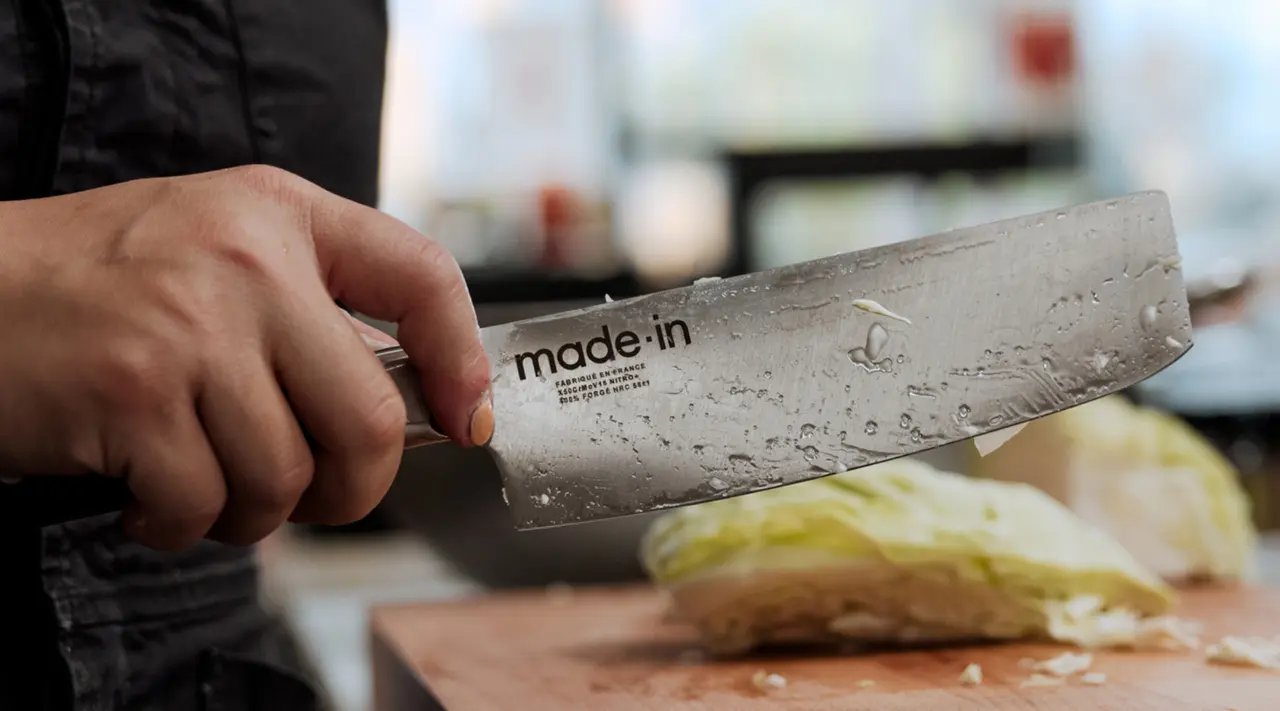Our Nakiri Knife is modeled after a Japanese blade that’s primarily used for chopping vegetables. In the 17th century, when the knife was thought to be invented, there was a ban imposed on raising and eating four-legged animals. While this was not always observed and wild animals were still fair game, the average Japanese diet primarily consisted of rice, fish, and vegetables.
Because of this, a knife was needed that could easily slice through all sorts of vegetables, from daikon to shiso leaves. From this, the Nakiri was born. Its design has changed very little and is still beloved by vegetarians and omnivores alike.
When we initially debuted our Nakiri, the limited edition blade sold out in just three hours. Knowing we had something special on our hands, we brought this knife back to stay with our signature colored POM handles as well as the elegant olive wood. Like all of our knives, the Nakiri is made in France by 5th generation bladesmiths who take great pride in carrying on the traditional craft. Here are three of our favorite features.
Slightly Curved Blade
Unlike our Santoku, which has a totally flat blade, the shape of our Nakiri’s is more akin to that of a Chef Knife. It possesses a subtle curve that makes it ideal for straight up and down cuts rather than rocking the knife back and forth.
Its cleaver-like shape is great for slicing down through a harder vegetable like a winter squash with ease. At 6-inches, the blade is also slightly shorter than either our Santoku or Chef Knife, making it great for tasks that require a little more precision.
Blunt Tip
The squared-off tip of our Nakiri is directly tied to its original purpose—cutting vegetables. It wasn’t designed to crack through animal bones, so there was no need for a pointed tip. The blade can be used for fish however, as their bones are much smaller.
If you’re trying to get an even chop, our Nakiri is especially useful. After cutting your vegetable into batonettes (little sticks) you can use the edge as a guide to create cubes of your desired size. Perfectly chopped vegetables, no ruler required.
Designed for Speed
If you’re more of a knife novice and worried about slicing your fingers, the Nakiri is a great option. The wide, rectangular blade helps protect your knuckles, so you don’t run the risk of nicking yourself.
This enables chefs, regardless of their knife skills, to chop and slice with more speed and precision. While rocking the knife back and forth takes more time, slicing down in a smooth, vertical cut makes short work of most vegetables.
Now that you know all about one of our favorite knives, add the Nakiri to your knife block today. It’s the perfect knife for vegetarians, vegetable lovers, and anyone who appreciates beautifully crafted blades.
Ready to Shop?
Our Nakiri is full-tang, which means that the X50CrMoV15 stainless steel runs all the way through the body of the knife, from the tip of the blade through the hilt. It’s also fully forged, meaning that the steel was hammered flat from a rod rather than stamped out of a sheet of flattened metal like a cookie cutter.
The fact that the Nakiri is both full-tang and fully forged makes it a sturdy blade that stays sharp and at 7 ounces, it feels well-balanced in your hand. It is a must have for any home chef.























